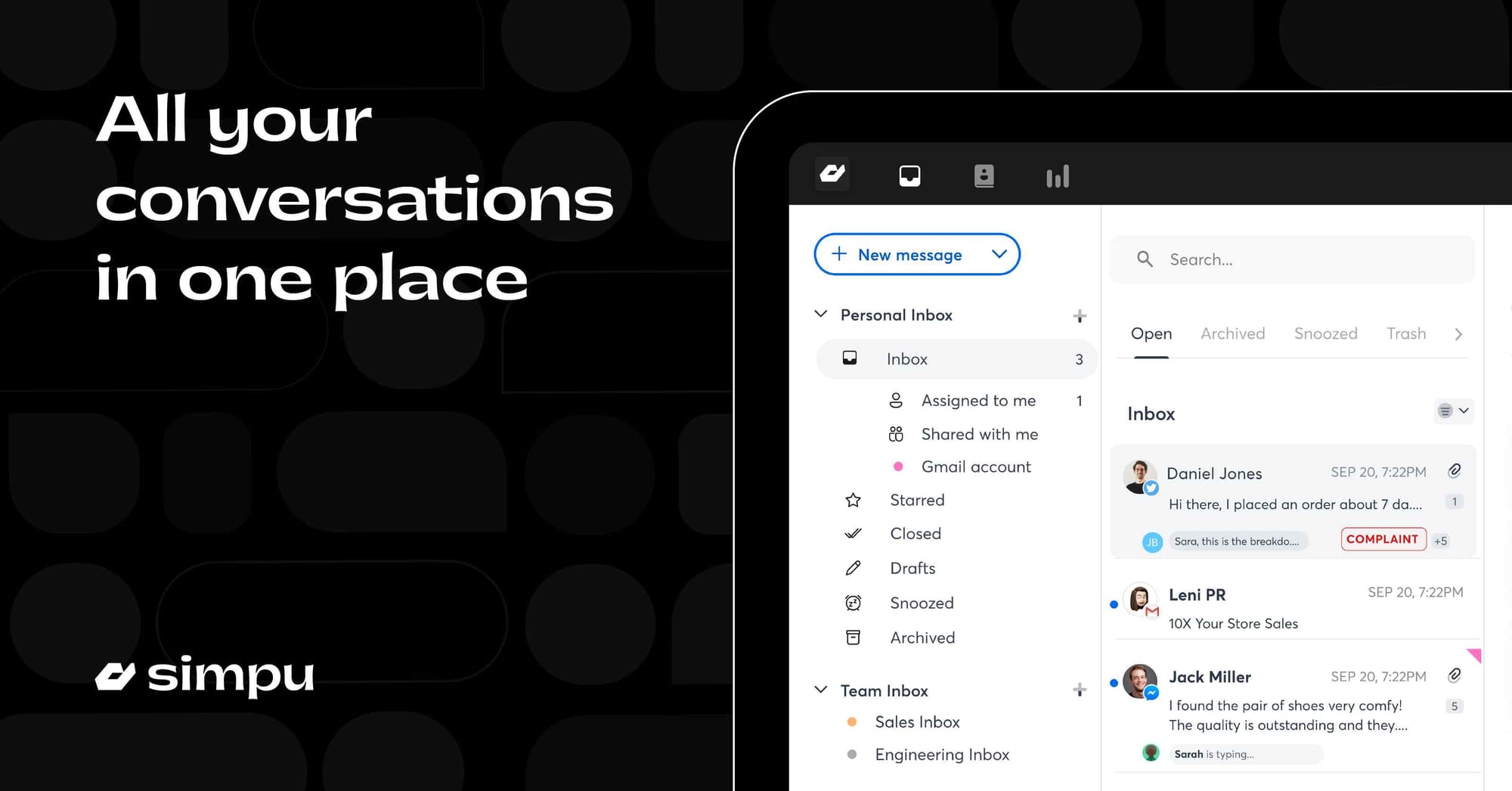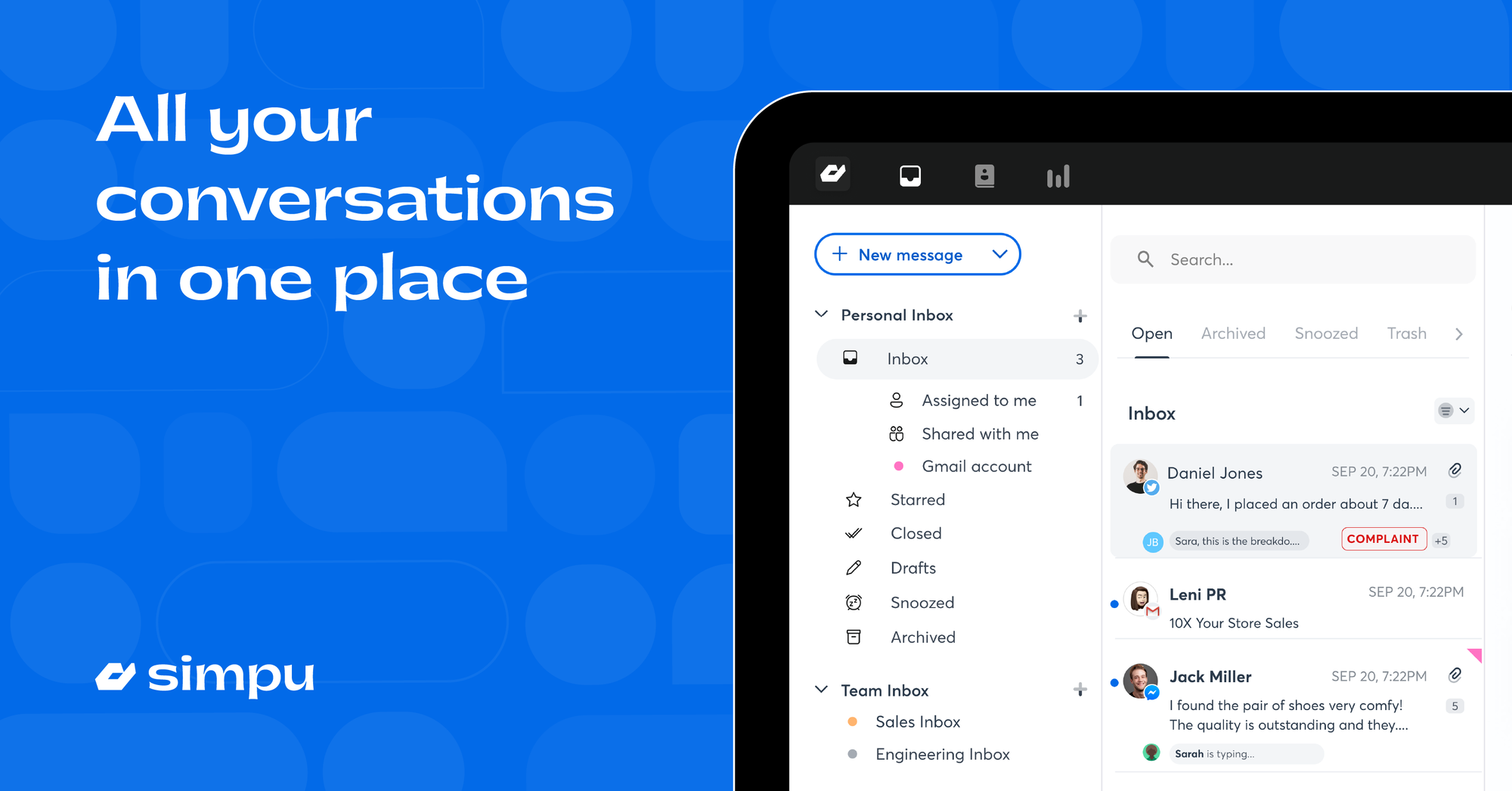Customer conversation is simply every customer discussion or chat with a particular business.
When you’re dealing with clients, it is important to have consistently delightful communication that makes them feel heard and supported.
This is the basis of great customer service. A business can easily make a good impression by having pleasant customer interactions.
If you've been struggling to build healthy customer relationships, you should prioritize leaving every customer communication on a positive note.
This creates positive feelings toward your brand and helps you improve customer satisfaction
Why is it important to talk to customers?
Customers support your business and are the foundation for growth and development. Every client you work with is a potential spokesperson for your brand.
Their experience would determine how they feel about your company and what they tell other people.
Through proper customer communication, you'll be able to understand customers' concerns and establish personal relationships to improve the overall customer experience.
If you want to consistently meet customer expectations, start by collecting customer feedback and using them to make deliberate improvements within the company.
Improve future interactions with more customers by learning from previous conversations. When you handle customer requests or solve a customer's problem, you’ll understand how to deal with similar situations later on.
How to start a conversation with a customer the right way.
You can learn how to talk to customers properly by practicing the following bullet points when you have a client conversation.
1. Be patient and respectful.
When you talk to customers, listen actively and take the time to fully understand what they are saying to you.
Always be calm, respectful, and polite because clients remember your attitude longer than your actual words.
Choose your words carefully and avoid using negative language so you don’t leave a bad impression.
2. Understand their goal or intention.
You will have a more successful conversation with a customer when you identify the purpose of the conversation early on.
When you know their intention or the goal they’re trying to achieve, you’ll be able to offer the right service.
3. Maintain a positive tone while talking.
Clients feel comfortable speaking to a customer support rep who maintains a consistent tone.
Use positive language and try to match the customer’s language and tone if you can.
When someone’s tone is formal, maintain that formality while you address them. When a customer’s tone is informal, you can relax your tone to match theirs.

Inbox
Connect all your communication channels - email, SMS, Whatsapp, Instagram, Messenger, and Live Chat to one inbox.
4. Validate your customers’ concerns.
You’ll have a positive impact on how a customer feels when you make them feel validated. Don’t dismiss their concerns or queries.
Let customers know you understand what they are going through and you’re eager to help.
5. Provide a useful solution.
When you understand what the customer wants, follow up with a solution that best fits their situation.
The most important part of customer communications is resolving any issues they may be facing while dealing with your business.
Answer the customer’s question directly in simple language they can understand.
You can offer alternatives to solutions they’ve tried so they can make the best choice.
6. Admit any faults and offer a sincere apology.
When a customer reports a fault, take responsibility and apologize immediately.
Don’t dwell too much on the apology but shift the focus to rectifying the problem.
7. Ask for further questions.
Encourage the customer to ask any questions they may have. This is how you’ll know if they need help with anything else.
At this point, you can convey information through your knowledge base so they can get educated at their own pace.
8. Request feedback to help you improve.
Ask for feedback to help you improve the overall customer experience of your business.
At the end of the conversation, you’ll have a general idea of how you made the customer feel so you’ll know what to do next time.

What to say when talking to customers.
The first step to learning how to talk to customers is figuring out what to say. It’s always a great idea for the support and sales team to have predefined conversation templates they use when talking to customers.
The conversation would be different when talking to an existing, new, or potential customer. You can build templates for each customer type.
- Add a personal touch.
Customers feel seen and valued when you address them personally. They get the sense they are dealing with a real human who cares about their needs.
Nobody wants to feel like they are just some number on a company database.
When you talk to clients, include some of their personal information like their name or location where you can.
- Show good manners.
Every conversation should begin with a greeting and warm welcome.
Remember your STEPs to always say “Sorry”, “Thank you”, “Excuse me”, and “Please”. End the conversation with a pleasant goodbye and a polite invitation to return.
- Use plain language.
Great communication happens when there is an understanding between the parties talking to each other.
Avoid using industry jargon that the customer may not understand.
Use simple words in your conversations, especially with new customers who may not yet be familiar with your products or services.
- Suggest useful solutions.
Based on the customer’s needs, suggest company products or services that would help solve their problems.
Provide information on how they can gain the most benefit from the company’s offerings.
Tips for providing excellent customer service.
You can provide the best service to your customers by using any of the following tips.
- Use body language properly.
You can get a better sense of what a customer is communicating by paying attention to their body language. You can also use it to demonstrate a positive attitude towards providing service.
Showing openness can have a huge impact on how customers relate and respond to you during the conversation.
- Speak positively.
Use positive language when you talk to customers. Pay attention to the words you use and their connotations. Understand that how you make a statement matters just as much as what you say.
Speaking positively would encourage customers to reach out again in the future if they need to. They would sense that your customer support is always willing to help.
When you use negative language such as “no,” “we don’t,” “we can’t,” or “that’s not possible,” it can discourage customers from asking for further help. Instead, use positive language such as “We’ll work on it” or “It will be available soon.”
- Don’t ignore customers'.
Customer support should respond to every customer in a timely manner.
The last thing you want is for a customer to leave the company feeling ignored or diregarded.
Let people know if they’ll have to wait and for how long. If you need more time or for them to come back, communicate this clearly and politely.
- Know your customers well.
Get more information about your customers so you know what topics would interest them. This helps you have more naturally pleasant conversations.
When you treat customers with a bit of familiarity, it reminds them they are dealing with a real human behind the help desk.
- Stay focused.
Remain focused on the reason why the customer contacted the company in the first place.
Don’t get carried away by something else without resolving their initial issue.
Handling difficult customers.
A customer may become rude or difficult when they are in a bad mood. They may lash out at you or begin to raise their voice when they are not getting what they want. When this happens, remember not to take it personally
First, try to calm the customer by apologizing. Keep your voice lowered and listen to what they say has upset them. Show empathy and let them know that you are willing to help them resolve their issue.
In extreme cases where the customer becomes violent or starts using offensive language, you should call management or security to intervene.
Companies that understand their customers.
You can learn from successful companies that have thrived on meeting and surpassing customer expectations. Here are a few you’re probably already familiar with;
- Netflix
Netflix is a streaming service that has grown from having 21.5 million paid subscribers in 2011 to over 223 million paid subscribers worldwide as of 2022.
Netflix focuses on putting the customer’s experience first. The app is personalized to give each customer the viewing choices they would enjoy the most. Their algorithm improves as you watch more videos to recommend the best for you.

- Buffer
Buffer is a social media management tool that makes marketing much easier for teams and companies. They have both reactive and proactive customer-facing teams.
They prioritize helping their customers figure things out and get what they need. To make in-app support easy, they included a support search icon on every page.

- Amazon
Amazon started out as an online bookstore but is now the biggest online retailer in the world. They focus on customers’ interests and behavior to offer a personalized experience.
The company has expanded its offerings to meet more customer needs by introducing the Kindle, Alexa, Amazon Go, and Amazon Prime.

- Apple
Apple is a leading technology company that has won the hearts of many loyal customers around the world. They prioritize customer satisfaction by creating a simple and flawless customer experience.
Apple is popular for its support team called Geniuses. They only hire the best to make sure that every team member provides knowledgeable service when troubleshooting a product.

Closing the sale with a happy customer
The major game plan when talking to customers is to close a deal that makes them happy. When you offer the right service at the right time, you’re solving a problem and this will make them feel happy or at least relieved.
You need to be empathetic and professional to have a successful conversation with a customer. The customer should recognize you as the friendly and unique voice that helps solve their problems with the company.
Leave as much room as you can for future interactions. Follow up later to provide any further service they may need.

Shared Inbox
Connect all your communication channels - email, SMS, Whatsapp, Instagram, Messenger, and Live Chat to one inbox.







